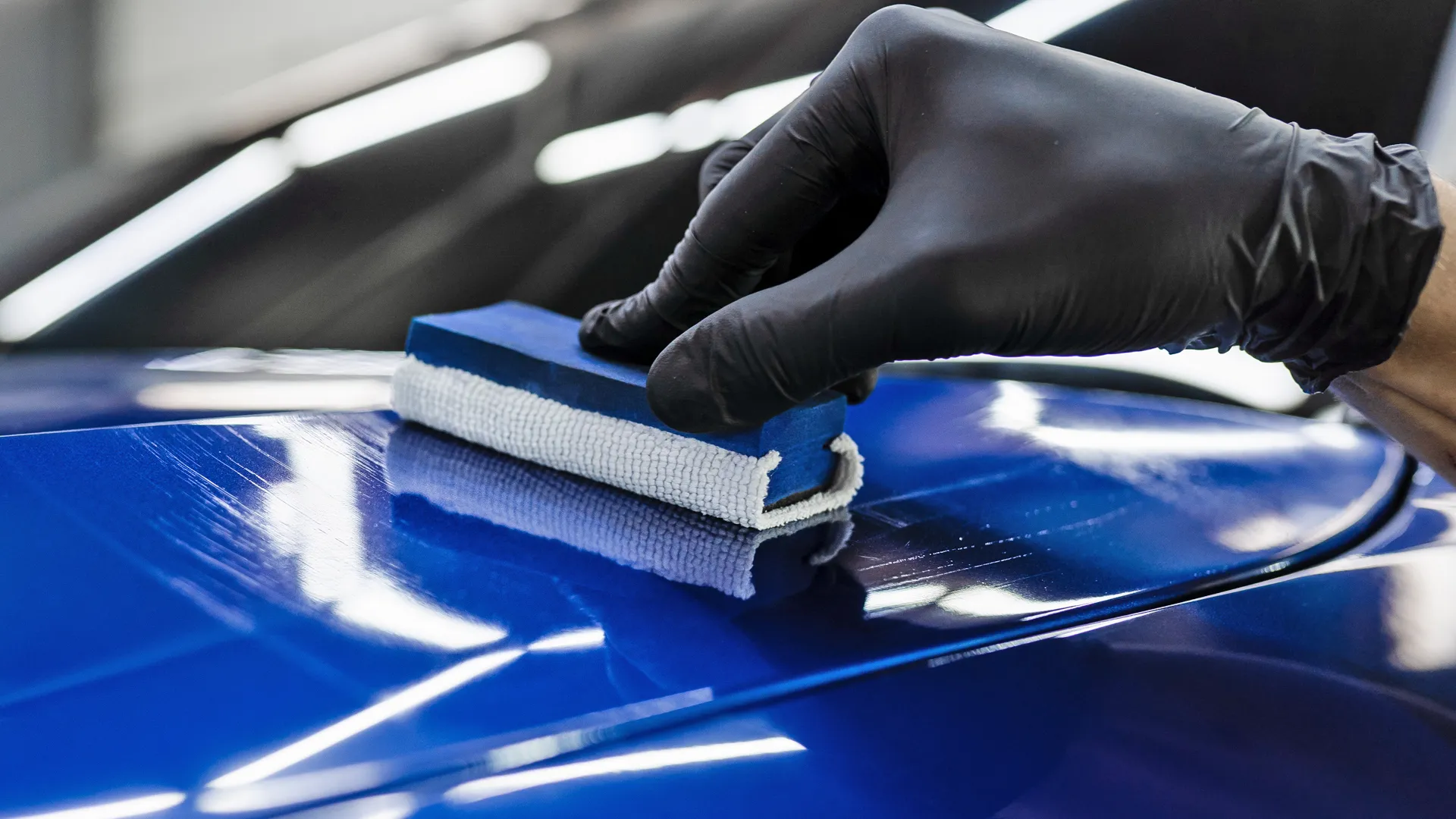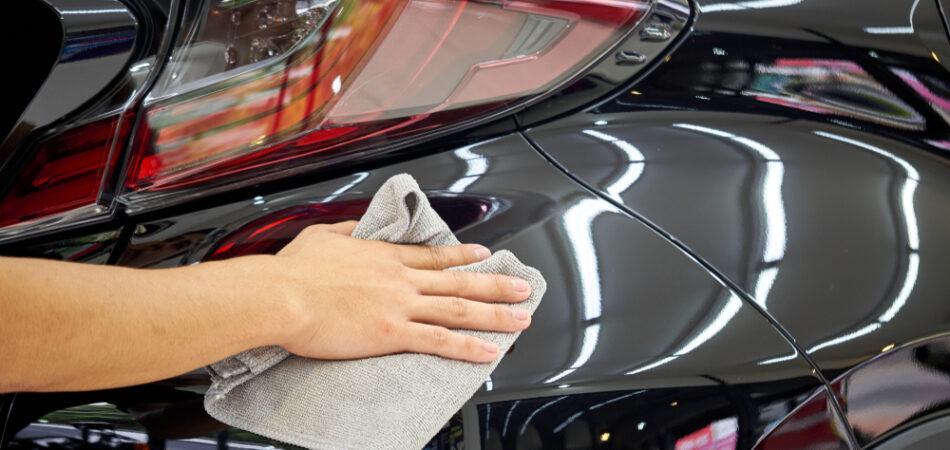Ceramic Coating: The Future of Automotive Surface Protection
Ceramic Coating: The Future of Automotive Surface Protection
Blog Article
Ceramic Finish vs. Traditional Wax: Which Gives Much Better Long-Term Protection?
The argument between ceramic finishes and typical wax for lorry defense has actually amassed substantial focus amongst auto fanatics and experts alike. While both offer the function of securing paint, their differences in sturdiness, application, and long-lasting maintenance costs might affect a customer's option. Ceramic finishings boast exceptional longevity and resistance to ecological aspects, yet the intricacy of their application increases questions about ease of access and usefulness. As we discover these contrasting choices, it becomes important to consider not just the instant benefits yet likewise the implications for lorry treatment over time.
Summary of Ceramic Finish
Ceramic finish has gotten significant appeal among vehicle enthusiasts and detailers alike because of its innovative protective top qualities. This innovative innovation is made to produce a sturdy, hydrophobic shield over an automobile's paint surface area, considerably boosting its resistance to environmental pollutants such as dust, UV rays, and chemical stains. Unlike standard wax, which gives a short-term layer of defense, ceramic coverings bond at a molecular degree with the paint, offering lasting longevity-- commonly extending beyond two years with correct upkeep.
The application process includes thorough prep work of the vehicle's surface area, consisting of cleaning and polishing to make sure optimal adhesion. Once applied, the coating treatments to create a durable layer that not just includes deepness and gloss to the paint yet additionally streamlines upkeep. With its hydrophobic homes, ceramic finish permits water and dust to glide off even more conveniently, reducing the frequency of washes and reducing the danger of swirl marks.
Additionally, ceramic coatings are available in various formulations, allowing users to select products customized to their specific demands and preferences. Generally, ceramic finish stands for a significant development in paint security innovation, providing remarkable efficiency contrasted to standard choices.
Review of Typical Wax
Traditionally concerned as a staple in automobile care, wax functions as a preferred choice for those seeking an uncomplicated method to improve and secure their automobile's paint - ceramic coating. Automotive wax typically comprises all-natural active ingredients, such as carnauba, or artificial substances, created to produce a protective layer externally of the paint. This layer not only boosts the car's gloss and shine but additionally supplies an obstacle versus ecological pollutants
The application of wax is usually easy to use, making it accessible for both experts and Do it yourself enthusiasts. Once used, wax calls for a treating duration, after which it hardens to develop a safety shell.
Nevertheless, while wax is reliable for enhancing the visual allure of a car, it is essential to note that the security it uses might necessitate much more regular reapplication contrasted to alternative products, such as ceramic finishings. On the whole, conventional wax stays a preferred alternative for those prioritizing ease of usage and prompt aesthetic renovation.
Durability and Durability Comparison
While both ceramic coverings and traditional wax offer protective advantages for automobile paint, their toughness and longevity differ considerably. Conventional wax, usually made from natural carnauba or synthetic polymers, typically offers a protective layer that lasts approximately three to six months. This reasonably brief life-span requires routine reapplication to preserve optimal protection.
On the other hand, ceramic layers are crafted from innovative nanotechnology, creating a covalent bond with the paint surface area. This leads to a robust, hydrophobic layer that can sustain for 2 to five years, depending on the item and ecological conditions. The superior resilience of ceramic coverings is credited to their chemical framework, which uses enhanced resistance to scrapes, UV rays, and oxidation.

Defense Against Ecological Factors
Securing a vehicle's paint from ecological factors is vital for maintaining its appearance and worth in time. Autos are continuously revealed to a variety of aspects, consisting of UV rays, bird droppings, tree sap, acid rainfall, and road gunk, every one of which can endanger the integrity of the paintwork.
Ceramic finishes provide a robust defense versus these environmental aggressors. Unlike standard wax, which can weaken rapidly under UV direct exposure, ceramic coatings form a long lasting, hydrophobic layer that stands up to the hazardous impacts of sunshine and toxic wastes. This advanced innovation produces a chemical bond with the automobile's surface area, supplying superior protection that lasts for many years, even in rough problems.
Standard wax, while easier to apply, commonly requires constant reapplication and supplies minimal resistance to impurities and UV rays. With time, it can damage down, leaving the paint at risk to scrapes and oxidation. In comparison, ceramic finishes keep their safety high qualities longer, substantially minimizing the danger of paint damage and guaranteeing that the car keeps its aesthetic appeal. Consequently, ceramic coatings are significantly identified as the remarkable option for long-lasting protection versus ecological aspects.
Application and Upkeep Differences
The techniques of application and succeeding maintenance for ceramic layers and conventional wax vary considerably, influencing the overall customer experience and efficiency of each product. Ceramic coatings require an even more elaborate application process, typically including surface area prep work that includes cleaning, decontaminating, and polishing the lorry. Once the surface is prepared, the ceramic coating is applied in a controlled setting, often needing expert proficiency to guarantee correct healing and bonding to the paint.

While both items improve automobile look, the longer-lasting defense supplied by ceramic layers might justify their initial investment, despite the more requiring application procedure. Alternatively, typical wax continues to be a preferred selection for those looking for an easier, albeit short-term, service.

Verdict
In verdict, ceramic layers demonstrate substantial benefits over traditional wax in regards to durability and environmental defense. With a life-span expanding 2 to five years and exceptional resistance to UV rays, dirt, and chemical stains, ceramic coverings offer a more reliable remedy for lasting automobile maintenance. Although the application process may require specialist expertise, the resulting price financial savings and decreased frequency of reapplication underscore the worth of ceramic finishes for those seeking optimum lorry security.
The dispute between ceramic coatings and typical wax for automobile protection has actually gathered significant attention amongst automobile enthusiasts and professionals alike. Unlike typical wax, which offers a short-lived layer of defense, ceramic finishings bond you could try these out at a molecular degree with the paint, providing lasting durability-- commonly expanding beyond two years with correct maintenance.
While both ceramic finishings and conventional wax offer safety benefits for auto paint, their longevity and long life differ significantly. For car lovers seeking lasting protection, ceramic finishes offer an engaging benefit over conventional wax items.
In verdict, ceramic coverings demonstrate substantial benefits over traditional wax in terms of toughness and ecological defense.
Report this page